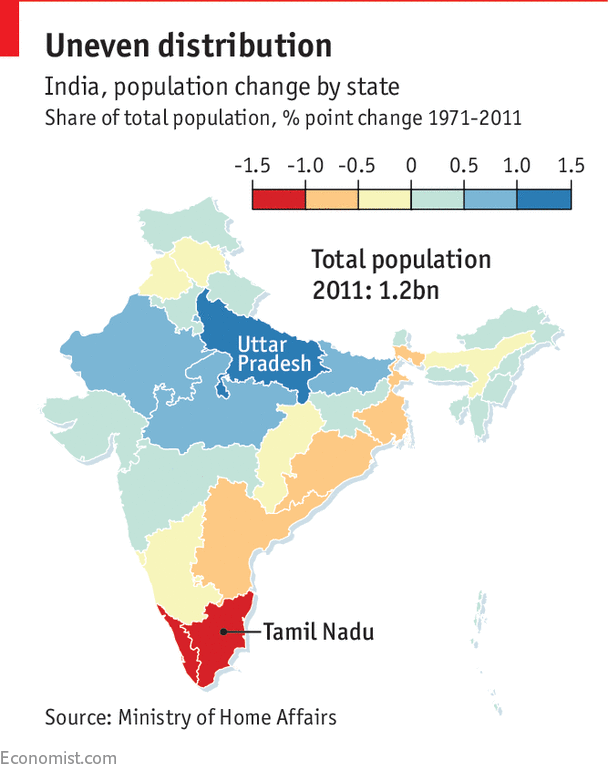They are still measuring their size using census data from half a century ago.

THE population of Uttar Pradesh is over 220m, enough to make the northern Indian state the world’s fifth-most populous country. But statistics still used by bureaucrats in New Delhi put it at less than 85m. Antiquated census data are used to split everything from federal funding to seats in the national parliament. A proposal to use up-to-date figures has created a political storm.

In the mid-1970s India’s southern states were doing better than northern ones at controlling population growth. That meant losing federal power and money, both doled out in proportion to population. The inelegant solution was to keep using census figures from 1971, an arrangement that became indefinite.
But buried in a recent government memo is a proposal to use figures from the most recent count, in 2011, for federal funding. Southern states are fuming. Their populations have risen since 1971, but nothing like as much as those of Uttar Pradesh and its neighbours (see map). They have also become much richer than northern states, not least because of lower fertility. That cuts their share of federal funding further.
The change would be a “punishment for states that had performed splendidly between 1971 and 2011 in stabilising their population,” thundered P. Chidambaram, a former finance minister (and southerner). The southern state of Tamil Nadu estimates that it could lose 800m rupees a year ($1.2bn), about as much as its policing budget.
The finance minister, Arun Jaitley, decried a “needless controversy”. But the row has a political dimension. India’s south is relatively less keen on the ruling Bharatiya Janata Party, which has its roots in the north. Regional parties, something of a thorn in the side of Narendra Modi, the prime minister, fear that a decision to stop using retro statistics to calculate federal funding would set a precedent for 2026, when the deal to allocate seats in the federal parliament using 1971 data is due to expire.
No comments:
Post a Comment
Note: Only a member of this blog may post a comment.